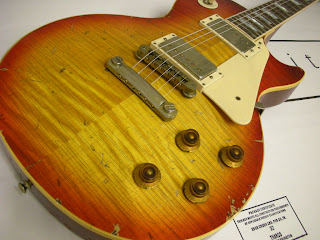Just in from Resonant Electronic Design, is their brand of pedals called "Field Effects". With only 2 pedals in the range so far, The Graviton Boost, and Manifold Drive, im sure they will expand on this very soon.
The Graviton Boost is more than just a simple volume control. The classic discrete, class-A circuit topology is reminiscent of vintage studio pre-amplifiers, while providing a twist on a classic theme that makes you want to leave it "on" all the time.
This thing gets LOUD. Really loud. By employing state-of-the-art circuit board layout techniques and only the best possible components, the noise floor on the Graviton is nearly imperceptible, even at full tilt. We literally spent years tweaking the circuit topology and components to give your signal a subtle sweetness just by turning this pedal on.
Whether you're a "guitar-cord-amp" kind of player, or have a giant rig full of the world's best FX units, the Graviton will find a place into your tone. Use it to drive the front end of your amp for just a little bit more hair and a lead boost, or drive it with another booster or OD for sweet triode-like clipping, the Graviton will make a obvious improvement in your tone.
This thing gets LOUD. Really loud. By employing state-of-the-art circuit board layout techniques and only the best possible components, the noise floor on the Graviton is nearly imperceptible, even at full tilt. We literally spent years tweaking the circuit topology and components to give your signal a subtle sweetness just by turning this pedal on.
Whether you're a "guitar-cord-amp" kind of player, or have a giant rig full of the world's best FX units, the Graviton will find a place into your tone. Use it to drive the front end of your amp for just a little bit more hair and a lead boost, or drive it with another booster or OD for sweet triode-like clipping, the Graviton will make a obvious improvement in your tone.
RRP - $230, DLX PRICE - $200
We approached the Manifold Drive a little differently. We didn't just copy an old proven design, instead we had specific goals in mind and designed a new overdrive circuit from the ground up to meet our expectations. We wanted a pedal that could capture the subtle nuance of high quality tube amp overdrive. What we ended up with is so much more.
The Manifold Drive looks deceptively simple, yet contains a plethora of useful tones that you'll love. The "Drive" control ranges from an incredibly mild soft clipping useful for solo boosts into cranked amps, to an all-out fuzz-like tonal aggression. We designed a entirely new clipping circuit that is able to mimic the compression envelope of an old, tube-rectified, push-pull tube amp. The three settings of the EQ switch allow for very different guitars to be used with the Manifold without having to alter the tone settings on your amp drastically.
Just like in our Graviton Boost, the Manifold Drive uses a discrete Class A topology and is built with audiophile grade components. Try it out, and you'll never want to play without one again.
RRP - $285, DLX PRICE - $250
***Demo Videos from a good friend of Deluxe Guitars, Mr Brett Kingman.***
Check out his youtube channel for some insane guitar playing here.....
Check out his youtube channel for some insane guitar playing here.....

















